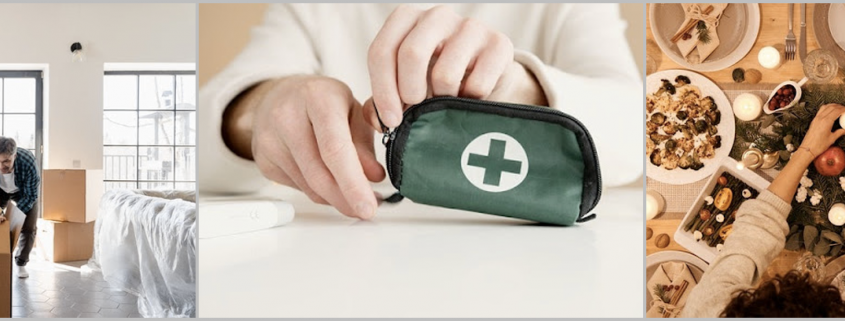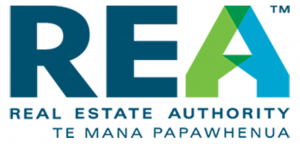Preventing Accidents at Home
Preventing Accidents at Home and How a Home Inspection Can Help
Sometimes, accidents in and around your home happen that can cause worry and stress as well as a possible injury. As a homeowner, it’s wise to mitigate these risks as much as possible by taking a few preventative measures.

Photo credit: Shutterstock
While you can’t always avoid every single accident, there are some things you can do to lessen the risks. A professional home inspection can also help you identify areas of high risk to help prevent something like a fall or injury to children, the elderly, and pets. Read on to learn how to avoid accidents at home and how an inspection can help.
What to do in case of an emergency?
You need to know what to do in the event of an emergency. Here are some quick tips to help you handle household-related accidents the right way.
- Stay calm. When an emergency occurs, it’s important not to panic. If you panic, you may not know what to do next, making the problem worse. Take some deep breaths and then focus on how to handle the current situation effectively.
- Call local emergency contacts. If the emergency is severe, you should contact your local emergency department immediately. These trained professionals can help you deal with medical, fire, or crime-related emergencies. Program some local emergency contact numbers into your phone. You can also write them down and place them on your fridge so everyone in the home can access them if needed.
Essentials of a home first-aid kit
 Photo credit: Shutterstock
Photo credit: Shutterstock
Every home should have at least one first-aid kit on hand. At a minimum, you should have a first aid manual, some adhesive bandages in various sizes, and antibiotic ointment. You’ll also want to ensure that you have tweezers, sterile gauze pads in different sizes, and some first-aid solution and hydrogen peroxide.
First aid checklist
You can find pre-made first-aid kits at most major retailers, or you can make your own. Whether you’re replenishing supplies or setting your kit up for the first time, use this checklist (for a family of four) to make sure you have what you need.
- 2 absorbent compress dressings
- 25-50 adhesive bandages in various sizes
- 1 adhesive cloth tape
- 5 antibiotic ointment packets or 1 full-size tube
- 5 antiseptic wipe packets
- 2 packets of aspirin or 1 bottle of 50 or more
- 1 emergency blanket
- 1 breathing barrier with a one-way valve
- 1 instant cold compress
- 2-4 pairs of nonlatex gloves
- 2 hydrocortisone ointment packets or 1 full-size tube
- 1 gauze roll bandage
- 1 roller bandage
- 5-10 sterile gauze pads in different sizes
- Oral thermometer (non-mercury/non-glass or digital)
- 2 triangular bandages
- Tweezers
- Emergency First Aid guide
- Flashlight with fresh batteries
- Safety pins
- Calamine lotion
- Sharp scissors
- Antibacterial soap
- List of emergency phone numbers
Making your first-aid kit kid-friendly
If you have children at home, it’s always a good idea to make sure you have a first-aid kit available to your kids. Put the kit in a place that’s easy to reach and show your children where it’s located. You should also show them how to use each item correctly. Here are a few basics to include in a kid-friendly first-aid kit:
- A list of important emergency phone numbers including family, friends, and relatives who live close by
- A working flashlight that’s easy to turn on
- Several different-sized adhesive bandages
- A tube of antibiotic ointment
Preventing falls at home by conducting a home inspection
One of the most common injuries in the home is when someone falls. A home-safety inspection will show you ways to prevent falls at home by making some simple changes.
- Inspect the floors to ensure they’re level and that no tiles or boards are loose or popping out.
- Make sure that all interior and exterior stairs are correctly attached and in good condition. Check handrails to make sure they’re securely installed along every staircase and stairway.
- Check sidewalks and outdoor walkways to ensure that there is no buckling concrete.
- If you have elderly family members, consider installing handrails in the bathroom to help prevent falls.
- Consider rearranging your furniture if it’s getting in the way of people being able to maneuver throughout the home easily.
- Make sure the basement is dry and free of standing water, resulting in accidental slips and falls.
How to prevent outdoor accidents with a home inspection
A home inspection can also help you identify areas of concern on the outside of your home. Here are some ways to prevent outdoor accidents with a home inspection.
- Inspect the garage and make sure that all hazardous materials are correctly stored.
- Ensure that all tree limbs are trimmed and away from power lines and the roof.
- Check to ensure that your deck or patio is stable and that there are no loose boards or signs of cracking or buckling of pavers and/or concrete.
- Ensure all outdoor electrical outlets are up to code and wired correctly to prevent a fire.
- Inspect the roof to make sure it’s in good condition, and never go on the roof without making sure that it’s stable.
Protecting children, pets, and elders
It’s essential to make sure that your home is safe, especially if you have kids, pets, or elderly family members at home. Here are some tips to help you create a safer home for everyone.
- Childproof your home by adding protective covers on electrical outlets and installing child locks on cabinets. Corner protectors for furniture can prevent kids from hurting themselves if they fall or bump into them accidentally.
- Make sure all smoke and carbon monoxide detectors are working and replace the batteries every six months.
- Hire an inspector to perform a senior safety inspection. They can identify potential hazards that can pose a risk to the elderly.
- Keep pets and kids safe by storing medication and cleaning supplies in a locked area that’s hard to reach.
- Add non-slip floor mats to hard surface flooring and non-slip tub grips in the bathtub to prevent falls.
- Have a home inspector confirm that all stairs and railing are installed correctly.
- Use a baby gate to keep kids and pets out of restricted areas.
- Ensure that you have proper lighting outside and indoors, so it’s easy to see at night.
Toy safety
It’s important to be aware of some toy-related safety concerns before giving a new toy to your child. Here are some tips to help you practice good toy safety.
- Check for recalls. Look out for any toy manufacturer recalls before and after purchasing them for your child. Check the product recall report from the Consumer Product Safety Commission, which includes children’s toys.
- Read warning labels and packaging information. Some toys aren’t suitable for kids under a certain age. Always check the packaging information and read warning labels carefully to make sure that the toy is ideal for your child and their age group.
- Avoid toys with small parts. Kids under the age of three should not play with toys that have small pieces that they could put in their mouths. You should also avoid balloons, bean bag chairs, and toys that easily come apart.
- Discard packaging and plastic bags. Plastic bags can pose a risk of choking or suffocation, so always make sure you dispose of them or put them out of reach. Discard packaging and plastic that comes with toys so children don’t accidentally ingest them or cut themselves on sharp plastic edges.
Space heater safety
A space heater can keep you warm during the winter, but it’s crucial to use them with caution. Keep these space heater safety tips in mind if you plan to use one in your home.
- Keep space heaters far from flammable materials. Always keep your space heater a minimum of five feet away from anything flammable, including furniture, curtains, rugs, blankets, or other materials that could catch on fire.
- Turn off space heaters when not in use. Make sure you turn any space heaters off whenever you leave the room or go to bed. They can be a significant safety hazard when left unattended.
- Supervise kids and pets when space heaters are on. Teach your kids and pets not to go near a space heater and keep a close eye on young children to prevent accidents.
- Never use a space heater to dry clothing or blankets. You might want to throw your socks on the space heater to warm them up, but this can be a severe fire hazard. Never use this appliance to heat up or dry clothing, blankets, or other items.
Know the dangers of natural gas
If you have a range, furnace, water heater, or clothes dryer that uses natural gas, it’s vital to be aware of gas leak prevention measures. Ensure that all of your appliances are installed correctly and replace old gas line fittings and shut-off valves that are worn or outdated. Check all gas appliances regularly and have gas lines monitored. Take good care of a gas HVAC system and install a carbon monoxide detector in every bedroom, hallway, and kitchen. If you think you might have a gas leak, it’s important to contact your local gas company immediately. Turn off the gas supply, open all doors and windows, and turn off electrical devices until the leak is identified and repaired.
Electrical appliances and their safety risks
It might surprise you to learn that household accidents involving electricity are quite common. You can minimize these risks by following some simple safety tips.
- Keep appliances away from water. It’s no secret that electricity and water don’t mix. Keep your electrical appliances away from standing or running water to avoid electrical shock or other emergencies.
- Don’t overload your outlets: If you have too many items plugged into the same outlet, it can cause circuit overload. This may cause the outlet to melt and expose the wires. Always use a power strip if you need to plug several items in one place.
- Call an electrician if you need help. If your lights start to get dim or start to flicker, it’s always best to contact a professional as soon as possible. These could be signs of poor or loose wiring, resulting in a fire.
Risks posed by holiday decorations
 Source: Shutterstock
Source: Shutterstock
The holidays are a time to celebrate, but a few risks are associated with certain decorations. Keep these tips in mind to make sure you have a safe and enjoyable holiday.
- Read all decoration instructions. Many holiday decorations hang by a rope or string. Others require electricity, such as Christmas lights and electric candles. Make sure you follow the directions closely to ensure that you adhere to the products’ specific safety requirements.
- Never overload your outlets or string lights together incorrectly. Make sure you use a power strip or spread your holiday lights out to avoid overloading the outlet. Check the manufacturer’s instructions to confirm how many sets of lights you can string together safely.
- Clear cords from common areas. Power cords lying across the floor or walkways can pose a safety hazard. Make sure all cords are safely tucked away, and use cord managers to keep them bundled together and out of the path of your family and friends.
- Unplug holiday lights when not in use. Never leave your holiday lights plugged in when you’re not home and unplug them before you go to sleep. This will prevent an accidental fire if you’re not awake or at home.
From stocking your first aid kit to childproofing your home, remember these tips to help prevent accidents. Consider hiring a home inspector to check your home so they can ensure that it’s safe both indoors and outside. With the right plan and these safety tips in place, you can enjoy living in a safe home for yourself, your kids, pets, and elderly family members.
By Daniela González / Content Marketing
If you are thinking of Selling click here for a FREE PROPERTY APPRAISAL
![]()








